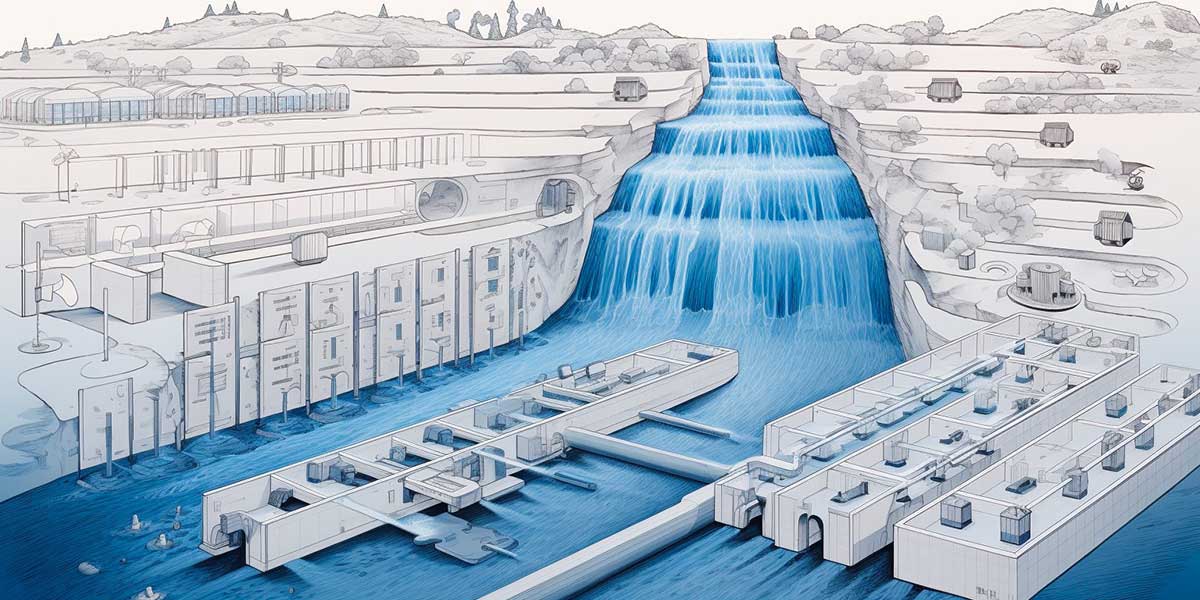What is a Digital Asset Management (DAM)

By Murat Korkmaz
CEO and co-founder of Daminion DAM.
"Just like a well-told story, a well-managed digital asset can captivate, inspire, and drive action - my primary revelation acquired over 20 years in the industry"
Table Of Contents
1. Introduction: Why Are We Talking About Digital Asset Management (DAM)?
Ah, digital assets. Those pesky pieces of content that seem to multiply like rabbits. They come in all shapes and sizes: photos, logos, videos, brochures, presentations, you name it.
You've probably poured a lot of time, money, and creative juice into making them. They're valuable — and not just in a "we spent a lot of money on this" kind of way.
But here's the problem: these assets don't always get the respect they deserve. Too often, they're left languishing in the depths of a disorganized shared drive, forgotten and underused. Or worse, they end up being misused, leading to brand inconsistencies, potential legal issues, and, dare we say, embarrassing faux pas.
Enter Digital Asset Management (DAM).

DAM is like that incredibly organized friend we all have, the one who color-codes their closet and has a place for everything. But instead of socks and sweaters, DAM deals with digital assets. It helps you manage, organize, and distribute your content more efficiently. It's like an intelligent library for your digital assets that can save you time, money, and a whole lot of headaches.
Why I am talking about this now? Because the digital landscape is growing more complex every day. Businesses are generating more assets than ever before, and they're distributing them across an ever-growing number of channels. This isn't a problem that's going to go away. In fact, it's only going to get worse.
But don't despair. As it turns out, managing your digital assets doesn't have to feel like herding cats. With the right DAM system, you can transform your messy pile of assets into a sleek, streamlined content machine. You can ensure the right people have access to the right assets at the right time.
You can prevent costly mistakes, protect your intellectual property, and even gain valuable insights to drive your marketing strategy.
That's why I'm talking about DAM. Because in this digital age, effective asset management isn't just a nice-to-have — it's a must-have. Stick with me, and I'll explain exactly what DAM is, how it can benefit your business, and how to tell if you need it. Let's dive in!
Digital Asset Management is the beating heart of your content ecosystem, ensuring your valuable assets don't fade into the ether but rather pulse with vitality through the veins of your business operations.
2. Digital Asset Management (DAM): Not Just Buzzwords
Alright, let's jump in. Before we go any further, let's make sure we're on the same wavelength about what Digital Asset Management (DAM) is. This isn't about fancy jargon or tech buzzwords—it's about a tool that could change the game for your business.
Simply put, DAM is a system designed to store, organize, search, retrieve and manage digital files. We're talking about your photos, videos, documents, presentations, logos, and any other digital content that your business produces or acquires. If you think about it as a super-organized, super-efficient virtual library of all your digital assets, you won't be far off.
But DAM isn't just about storage. Oh no, it’s far more valuable than that. Think of it as your own team of digital librarians. Except these librarians don’t just catalogue and store assets; they also secure them, control access to them, and even analyze their use to give you invaluable insights.

DAM is more than just an acronym. It's a commitment to streamline and secure your digital assets, illuminating the value that's been hiding in plain sight
Your DAM system could include anything from an internal company portal to cloud-based software, and it makes your digital assets easily accessible to your team members, wherever they are. In a world where remote work is becoming the norm and digital assets are a vital part of your business, a DAM system could be the tool you didn’t know you needed.
Now, you may be thinking, "I have a decent folder system on my network drive, and my team knows how to use it. Do I really need another system?"
Here's the thing: your folder system is good. But a DAM system? It’s like your folder system on steroids. Your DAM system doesn't just hold your digital assets—it enables you to control who has access to what, track how and where your assets are being used, and ensure your brand consistency. Plus, it has a powerful search function that can find the exact asset you need in an instant.
In short, DAM isn't just another fancy tech acronym—it's a powerful tool that can protect your digital assets, streamline your operations, and even strengthen your brand.
And if you’re still not convinced, stick with me. In the next sections, we're going to delve into the real cost of not using a DAM system, and the tangible benefits that come from adopting one.
3. The Real Cost of Not Using a DAM System
You've heard it before: time is money. But when it comes to managing digital assets, this adage takes on a whole new meaning. The real cost of not having a Digital Asset Management (DAM) system extends beyond the initial price tag of acquiring one. It burrows deep into the hidden corners of your business operations and can influence the overall efficiency, productivity, and bottom line of your company.
Firstly, let's address the elephant in the room: inefficiency. You might be thinking, "Well, we've got a system. We store files on the cloud, we have shared drives." And yes, those solutions work—to a degree. But as your asset base grows, these makeshift systems start to strain under the weight of the assets they hold. It gets harder to find files, versions get mixed up, and before you know it, you have team members spending precious hours just managing assets instead of using them.
A DAM system, on the other hand, organizes, categorizes, and makes your assets easily searchable. It can streamline workflows, automate processes, and save your team countless hours—hours that could be better spent on tasks that generate revenue.
Let's talk about loss of intellectual property. Your assets represent a considerable investment in time, creativity, and, yes, money. With traditional file-level security measures, your precious content might be vulnerable. It's often too difficult to manage detailed asset permissions, leading many companies to open access to everyone or, at best, restrict only the most sensitive content. This leaves the majority of your assets exposed to misuse or theft.

With DAM, your content managers can set granular access permissions, ensuring that only authorized users can access specific content. Plus, every action is logged, which adds an additional layer of security and provides useful data for audits and usage metrics.
Consider improper or illegal asset use. Not all misuse is intentional. Sometimes, team members may unknowingly use assets inappropriately, which can lead to serious consequences, like damaging customer relationships or even triggering legal action. A DAM system enables you to control who can access what, and when, helping prevent such missteps.
And then there's the potential litigation. Asset usage rights can be complex, and if they're violated, you may face costly legal action. A DAM system can help enforce these rights, track usage, and even restrict access based on usage statistics or specific usage rules.
Not implementing a DAM system might seem like a cost-saving decision at first glance. But when you factor in the potential increase in operational efficiency, reduction in time wasted, protection of valuable assets, and mitigation of legal risks, the real cost of going DAM-less becomes starkly clear.
By investing in a DAM system, you're not just buying software—you're acquiring a business solution that pays for itself through increased productivity, better asset protection, and smarter decision-making. Think about it: Can your business really afford not to have a DAM system?
Not investing in a DAM system is like ignoring a leaky faucet. It might not seem significant, but the long-term consequences could be costly.
4. Beyond Money: The Other Risks of Ignoring DAM
While a Digital Asset Management (DAM) system undoubtedly saves money and enhances productivity, it's essential not to overlook the other, equally significant risks your business incurs by ignoring DAM. These risks touch on fundamental aspects of your brand identity, reputation, and your ability to react to the ever-changing digital landscape.
Weakening of your brand is a considerable risk if you're not using a DAM system. Your brand's consistency - in terms of its look, feel, and message - is vital for maintaining credibility with your audience. Think about it: you've put significant effort into developing a robust brand image, but without a centralized system to manage your assets, your brand consistency can quickly get derailed. This inconsistency can confuse customers, dilute your brand's power, and eventually affect sales and customer retention.
With a DAM, you're in control. It ensures that everyone in your team, from your website designer to your salesforce, uses the correct and most up-to-date assets. By maintaining brand consistency, you're strengthening your brand's image in the eyes of your consumers and competitors.

Neglecting DAM is not just about potential financial losses - it's about risking the integrity of your brand, the efficiency of your operations, and the security of your assets.
Ignoring DAM also exposes your business to the risk of improper exposure or use of your content. Sometimes, content that's not meant for public release—like works in progress, pre-release/pre-approval materials, or campaign-specific assets—can find their way into the public domain. This not only damages your brand's image but could also trigger legal issues. DAM systems offer robust security features to ensure that content is available only to the right people at the right time.
What about adapting to new content markets? The digital landscape is fluid. It shifts and evolves continually, opening new avenues for content delivery. If you're not leveraging DAM's delivery capabilities, you're potentially missing out on reaching your audience through these new channels. A DAM system can swiftly push the right content to the right endpoints, allowing you to stay agile in the face of change.
Lastly, the lack of a DAM system means you're missing out on valuable marketing metrics. DAM systems log and audit features open a goldmine of data, giving you insights into your content's performance. This information can guide you to create more effective campaigns and refine your content strategy, driving more value for your business.
Ignoring DAM, therefore, isn't just a financial risk. It's a risk to your brand's integrity, your ability to control content exposure, adapt to digital changes, and make data-driven marketing decisions. A DAM system isn't a luxury—it's an essential tool that your business needs to navigate the digital terrain successfully.
5. Where DAM Shines: Strengthening Your Brand and Connecting to New Markets
In an era of rapid digitization, a robust Digital Asset Management (DAM) system is a game-changer. Beyond safeguarding your valuable assets, DAM serves as a powerhouse for strengthening your brand identity and connecting your business with evolving content markets. Here's a closer look at how DAM can elevate your business:
DAM: The Custodian of Your Brand Consistency
Brand consistency, whether in your logo, marketing collateral, or product images, is crucial to building and maintaining your brand's strength. Inconsistencies, even minor ones, can confuse your audience and dilute your brand's message. A DAM system becomes your brand consistency's watchdog, ensuring that:
The correct logo is always used, whether on your website, in marketing emails, or printed materials.
Your sales team is armed with the most recent, approved marketing slides for their presentations.
Your product images and manuals are up-to-date across all platforms.
Marketing videos are deployed and withdrawn promptly as campaigns start and end.
DAM does this by serving as the single, definitive source for all your digital assets, eliminating the risk of outdated or inappropriate materials being used. With the right DAM system, you're not just preserving your brand's consistency, but enhancing its value and recognition in the market.

Leveraging DAM to Connect to New Content Markets
The consumption of content today is a dynamic process, ever-evolving and expanding across diverse channels. A good DAM system allows you to leverage this dynamism to your advantage by seamlessly pushing your content to various endpoints. Whether it's social media, product-specific websites, e-commerce platforms, blogs, or more, DAM ensures your content reaches the right market at the right time.
As markets evolve, and new ones emerge, DAM gives you the flexibility to quickly adjust your strategies. You can feed content to a new social media app that's capturing everyone's attention or quickly pull back from a platform that's losing traction. In essence, DAM allows you to be where your audience is, without missing a beat.
By investing in a DAM system, you're investing in a tool that not only protects your valuable digital assets but also enhances your brand's strength and market adaptability. Whether it's by ensuring brand consistency or facilitating your foray into new content markets, a DAM system is a potent addition to your business's strategic arsenal. So, instead of asking, "Does my business need a DAM system?" the question should be, "Can my business afford to be without DAM?"
With DAM, your brand becomes a symphony - each asset a note that, when played together, creates a harmonious brand experience that resonates across every market
6. Marketing Metrics and DAM: Making Smarter Decisions
One of the less obvious, but immensely valuable benefits of a Digital Asset Management (DAM) system is its ability to generate and leverage marketing metrics. Understanding the performance of your digital assets and correlating them with your campaigns or products can unlock valuable insights that drive smarter decision-making.
Deciphering the DAM Data
DAM isn't just a storage system; it's a data powerhouse. With a robust DAM system, you can track how, when, and where each of your assets is used. This data allows you to paint a comprehensive picture of your assets' performance. For example, you can look at:
The cost of procuring or creating each asset.
The frequency of each asset's usage.
The contexts or platforms where each asset has been used (campaigns, products, content markets, etc.)
The relationship of the asset with other assets.
The potential for each asset to be used in other campaigns or products.

DAM is the compass that guides your marketing strategy. It transforms raw data into valuable insights, lighting the path to smarter, more informed decisions.
Driving Smarter Decisions with DAM Metrics
With the data gleaned from your DAM system, you can begin to analyze the success of your campaigns or products in relation to the digital assets used. Understanding these associations allows you to make data-driven decisions about future content creation and asset usage.
For instance, if you find that a particular type of asset consistently results in positive campaign outcomes, it might be worth investing more in similar content. Similarly, understanding the cost-effectiveness of an asset—whether it generates enough value relative to its creation or procurement cost—can guide budget allocations.
Furthermore, the ability to track an asset's usage across different campaigns or products can inform your content reusability strategy. You can pinpoint high-performing assets that could be repurposed for maximum ROI.
Engaging with Content Consumers
DAM can also be leveraged to draw insights from your audience's engagement. For instance, user-generated content in response to your campaigns can provide valuable insights into consumer preferences. This data can then be fed back into your DAM system to inform future campaigns.
In essence, a DAM system can transform the way you approach marketing metrics. Instead of making educated guesses, you can base your decisions on concrete data, making your marketing efforts more effective and efficient. So, the question isn't whether you can afford a DAM system—but whether you can afford to make marketing decisions without the insights a DAM system provides.
7. How to Tell If Your Business Needs a DAM System
Recognizing the need for a Digital Asset Management (DAM) system can be a game-changer for businesses of all sizes. It isn't just about dealing with large volumes of assets; it's also about the efficiency, security, and insights a DAM system can offer. Here are a few telltale signs that your business could benefit from implementing a DAM system.
You're Struggling with Disorganization
One of the first signs you need a DAM system is the difficulty in locating and managing your digital assets. If your team spends a significant amount of time searching for assets or if critical files get lost in the shuffle, a DAM system could dramatically streamline your operations.
Your Branding Is Inconsistent
Brand consistency is crucial for building trust and recognition in your market. If you're having trouble maintaining consistent use of logos, colors, messaging, or other brand elements across different platforms, a DAM system can help by serving as a central source for all approved assets.
You’re Vulnerable to Intellectual Property Loss or Misuse
If your business lacks a robust system for controlling access to and use of your digital assets, you're at risk. DAM systems can mitigate this risk by offering advanced permission settings and monitoring capabilities, which can significantly reduce the chance of intellectual property theft or misuse.

Your Team Lacks Collaboration Efficiency
If your team often works together on projects involving digital assets and struggles with version control or simultaneous access, a DAM system could be the solution. It provides a centralized, accessible platform for collaboration that can dramatically increase your team's productivity.
You’re Not Leveraging Asset-Related Metrics
A DAM system isn't just a digital storage vault; it's also a rich source of data. If you're not currently using asset-related metrics to guide your marketing decisions, you might be missing out on valuable insights a DAM system could provide.
You Need More Efficient Asset Distribution
DAM systems excel at helping businesses distribute their assets efficiently, ensuring the right content gets to the right places at the right time. If you're struggling to deliver assets to various channels or markets swiftly, a DAM system could significantly improve your process.
If any or all of these signs resonate with your current business situation, it's time to seriously consider investing in a DAM system. Remember, implementing DAM is not just about handling more assets—it’s about optimizing the way you manage, secure, and utilize your digital properties to generate maximum value.
Choosing the right DAM system is like choosing the right pair of running shoes. It's not about the fanciest or most expensive pair; it's about what fits your needs and can go the distance with you
8. Getting Started with DAM: How to Choose the Right System
The decision to invest in a Digital Asset Management (DAM) system is a critical one, but even after recognizing the need for DAM, the journey doesn't stop there. The real challenge lies in selecting the right system that aligns with your business needs and growth plans. Let's walk through the process.
Identify Your Business Needs and Objectives
Before you start looking at the options, understand why you need a DAM system. Are you looking to improve asset organization and retrieval? Is it about protecting your intellectual property? Do you need to streamline collaboration or better control access? Maybe you need better insights from asset-related metrics? Understanding your specific requirements is key to identifying what features and capabilities your DAM system should have.
Examine Current Content Workflows
Take a close look at your current content workflows and processes. This will help you identify bottlenecks and pain points that the DAM system should address. The right DAM solution should integrate seamlessly into your existing workflows while improving efficiency and productivity.

Determining the need for DAM isn't about your business size, it's about the scale of your ambitions. Every asset unmanaged is a missed opportunity - uncover the potential.
Determine User Roles and Access Control
A significant advantage of DAM systems is the ability to customize access based on user roles, permissions, and content rules. Outline the different user roles within your team, the kind of access they require, and how they should interact with your digital assets.
Consider Scalability and Future Growth
While your current needs are important, consider the future as well. Will the DAM system accommodate your growth? As your business scales, you'll want a system that can handle increasing volumes of assets, more users, and potentially more complex workflows.
Evaluate Technical Support and Training
Implementing a DAM system involves a learning curve, and your team will need support during this transition. Consider the level of technical support and training offered by the DAM provider. Effective customer support can make the transition much smoother.
Assess Cost and Return on Investment (ROI)
Finally, consider the costs involved and the potential ROI. While implementing a DAM system requires an upfront investment, the long-term savings in time, efficiency, and risk mitigation can lead to a significant return. However, ensure that the system you choose offers value for money and aligns with your budget.
Take the time to research various DAM systems, demo their offerings, and read customer reviews. Remember, the right DAM system for your business isn’t necessarily the one with the most features or the highest price tag, but rather the one that fits your specific needs and enhances your strategic capabilities.
9. Conclusion: DAM Is More Than Just a System - It's a Solution
In the course of our exploration, we've established that Digital Asset Management (DAM) is not merely a software tool. Instead, it's a comprehensive business solution that brings a multitude of benefits to your organization, touching everything from your operations to your marketing endeavors and strategic decision-making.
A DAM system does more than managing assets. It's a platform that serves to empower your brand, ensuring that your brand's integrity and consistency shine across all platforms. In essence, it helps you project a coherent, powerful message that resonates with your target audience.
In the ever-evolving digital landscape, the capacity to swiftly connect with and deliver content to new markets is a game-changer. With a DAM system, you can nimbly adapt to shifting market trends and seize new opportunities, ensuring your content stays relevant and impactful.
Moreover, the insights provided by DAM metrics can significantly inform your marketing strategies. By tying successful or failed campaigns back to the respective assets, you gain a deeper understanding of your content's performance, driving more effective campaigns and ultimately, contributing to business growth.
From a risk perspective, the value of DAM is equally compelling. The comprehensive security controls help protect your valuable intellectual property from unauthorized access and misuse, while also aiding in compliance with legal requirements, thus avoiding potential litigation associated with breaches of asset usage rights. By preventing inappropriate asset usage, it safeguards your company's reputation, an invaluable asset in its own right.

When evaluating if your business needs a DAM system, take a hard look at the costly repercussions of operating without one. These include heightened operational costs, the potential loss or misuse of valuable digital property, and diminished potential value from your assets. These burdens can take a significant toll on businesses of any size.
As you embark on the journey to select a DAM system, remember that your goal is to find a solution that aligns seamlessly with your unique business needs and growth plans. It's not merely about choosing a system, but about picking a solution that integrates smoothly into your existing workflows, enhances efficiency, and scales as your business evolves.
But don't just take our word for it. The best way to fully appreciate the power and potential of a DAM system is to see it in action. That's why we strongly recommend getting in touch with DAM experts, such as the team at Daminion. They offer a free 30-40 minute demo session with a DAM expert. You'll have the chance to see firsthand how a DAM system can revolutionize your business processes. Following the demo, you can try out a free test-drive to explore the system's capabilities further.
In conclusion, a Digital Asset Management system isn't a luxury for your business, but a necessity in the digital age. It's an investment, a game-changer, a solution to multiple business challenges. Your digital assets are a goldmine of potential value, and with the right DAM system in place, you're perfectly positioned to tap into it.
In the end, DAM isn't just about managing digital assets. It's about finding a solution that integrates into the very fabric of your business, empowering you to make better decisions and achieve better outcomes
